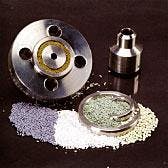As a general rule the men and women who work in the hydrocarbon industry are highly supportive of environmental and conservation efforts—first by choice and secondly by necessity.
In the first case, we all want clean beaches for our children, pristine forests for hiking, clear air for mountain photography, and so on.
Secondly, in a business sense, any waste of resources is an economic loss. Production waste, especially in the downstream sector, shows up on the liability side of balance sheets.
In this year's Catalyst Report, beginning on p. 49 and in the accompanying catalyst survey list found exclusively on OGJ's web site at www.ogjonline.com, we concern ourselves with choosing the exact fresh catalyst formulation for a specific refining unit.
But what about used catalyst? What can be done with a catalyst after it loses activity and has absorbed its capacity in contaminants and metals?
One method used to minimize waste is to reuse or recycle the spent catalyst. Used catalyst, after metals reclamation, can be used as road material. But other ingenious and safe methods have been developed over the years to reuse spent catalyst. This is especially true for spent, or equilibrium, FCC catalysts.
Some years ago a survey was undertaken to determine ways that spent FCC catalyst could be reused to avoid disposing of it as waste.
All refiners surveyed reported that careful consideration was given to each method before implementation to ensure no environmental damage would result from such alternative uses of equilibrium catalysts.
According to the survey, a popular method for reuse was resale. A refinery with less-severe operations could recover some of the cost of the catalyst by selling its low-metals, still-active catalyst to another refinery. The information from potential buyers and sellers was gathered and distributed via a monthly newsletter to the refining industry. The program was called Kat-Match.
Making bricks
Industries outside the refining industry can also use spent catalyst. In a pilot study, Acme Brick's research and development facility at Denton, Tex., tested FCC catalyst to determine its effectiveness in brick production. First, US Environmental Protection Agency tests were performed to ensure the absence of downstream water contamination. After test approval, a test batch of bricks was produced. The resulting bricks were a "value-added" product—one with better qualities than bricks produced without using the equilibrium FCC (ecat) catalyst.
More uses continue to be found for catalysts, such as the assortment displayed here, after they've been spent in refining operations. Photo courtesy of ChevronLummus Global LLC.
According to R&D personnel, the ecat was mixed with bank sand, kaolin clay, and other basic ingredients and then sent through an extruder. The shaped bricks displayed less spalling than the normal mixture due to the characteristic fluidity of the catalyst.
After curing in a large kiln the bricks were tested. They displayed an improved compressive strength due to the manufactured hardness of the catalyst. They also displayed an improved tensile strength due to the particle-size distribution of the ecat. The smallest ecat particles fit within the spaces created by the more uniform particle size of bank sand.
Finally, the bricks presented less surface scumming than those made with the usual mixture. Vanadium, an element found naturally in kaolin clay, will cause a white, powdery, scum-like contaminant on the surface of bricks. When excessive, this scumming will cause the bricks to be off-spec, and they must be crushed and reprocessed. Ecat minimizes the occurrence of scumming on the fired bricks.
Other uses
Another recycling proposition is cement production. At one time, Federal White, a cement manufacturer in Ontario, was using 23 tonnes/day of ecat in the production of Portland white cement. Northern US refineries were required to pay part of the freight to get it there, but it was still an economical recycling method.
Some fairly creative uses in the ranching industry have been rumored—although not formally documented. Supposedly, one refinery sent its ecat to a cattle rancher. The rancher added the ecat to cattle food to promote good bovine digestion.
Another refinery reportedly sent its ecat to a mink rancher. The rancher used the spent catalyst as bedding material. The little minks rolled around in it because the catalyst helped keep their fur clean.


